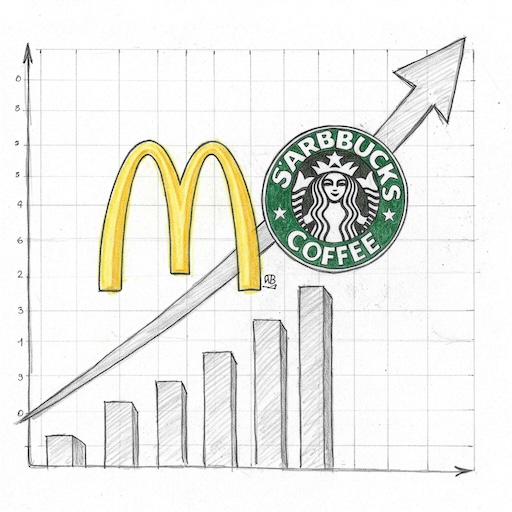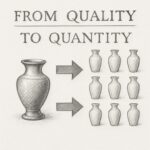Both McDonald’s and Starbucks experienced remarkable growth in their early decades. From the time Ray Kroc joined McDonald’s in 1954, the number of outlets grew from 100 to over 2,200 in 20 years. In comparison, after Howard Schultz acquired Starbucks in 1987, the number of stores skyrocketed from 17 to over 13,000 by 2007. However, these two companies adopted different growth strategies. McDonald’s leveraged the franchise model, enabling rapid expansion through partnerships. In contrast, Starbucks primarily focused on company-owned stores, ensuring quality control and brand consistency as it grew.
Financial Landscape and Capital Access
In the 1950s, McDonald’s adopted a franchise model in response to the limited availability of capital in an immature financial market. Although General Motors reached a market capitalization of $10 billion in 1955—a remarkable figure at the time—such access to funding was largely restricted to large corporations. Smaller businesses like McDonald’s had fewer financing options, so the company leveraged franchisees’ investments to fuel its rapid expansion, ultimately opening over 2,200 stores by 1974.
In contrast, when Howard Schultz acquired Starbucks in 1987, the financial landscape was more mature. By the 1990s, U.S. stock market capitalization had grown significantly, making it easier for Starbucks to raise capital through public offerings. For example, in 1990, IBM had a market capitalization of approximately $27 billion, while ExxonMobil was valued at around $48 billion. The total market capitalization of all publicly traded U.S. companies in 1990 was approximately $3.1 trillion, compared to just around $250 billion in 1955. This robust financial environment enabled Starbucks to focus on company-owned stores, expanding from 17 locations in 1987 to over 13,000 by 2007.
Cost Structure and Store Setup
To open a McDonald’s, you need a fully equipped kitchen, including grills, fryers, refrigeration units, and more. Additionally, ample seating space, drive-thru facilities, and play areas are common. The estimated cost today, excluding licensing fees, ranges from $1.3 to $2.3 million, depending on location and size.
In contrast, opening a Starbucks requires less equipment. A typical store includes espresso machines, coffee grinders, blenders, and refrigeration units for pastries and milk. Starbucks locations often feature comfortable sofas and stylish seating to encourage customers to linger. The average opening cost for a Starbucks store today ranges from $315,000 to $700,000, significantly lower than McDonald’s.
Conclusion
The divergent growth strategies of McDonald’s and Starbucks were shaped by the financial realities and operational demands of their respective eras. McDonald’s franchising model emerged as a solution to limited access to capital and high startup costs, enabling rapid scaling through external investment. Starbucks, operating in a more mature financial market with lower capital requirements per store, capitalized on its ability to raise funds through public offerings and maintain brand control through company-owned locations. These strategic choices reflect how financial context, business model, and customer experience priorities can influence the path to global expansion.


